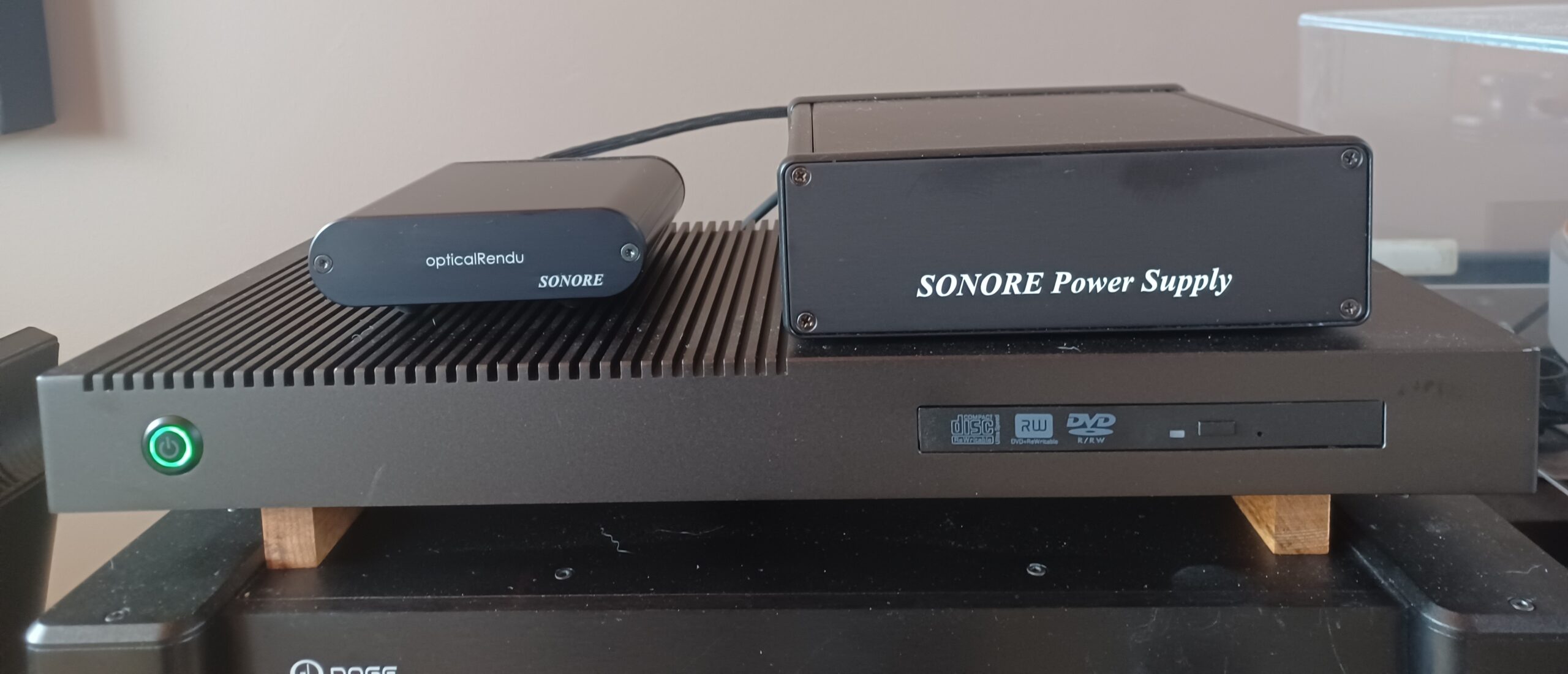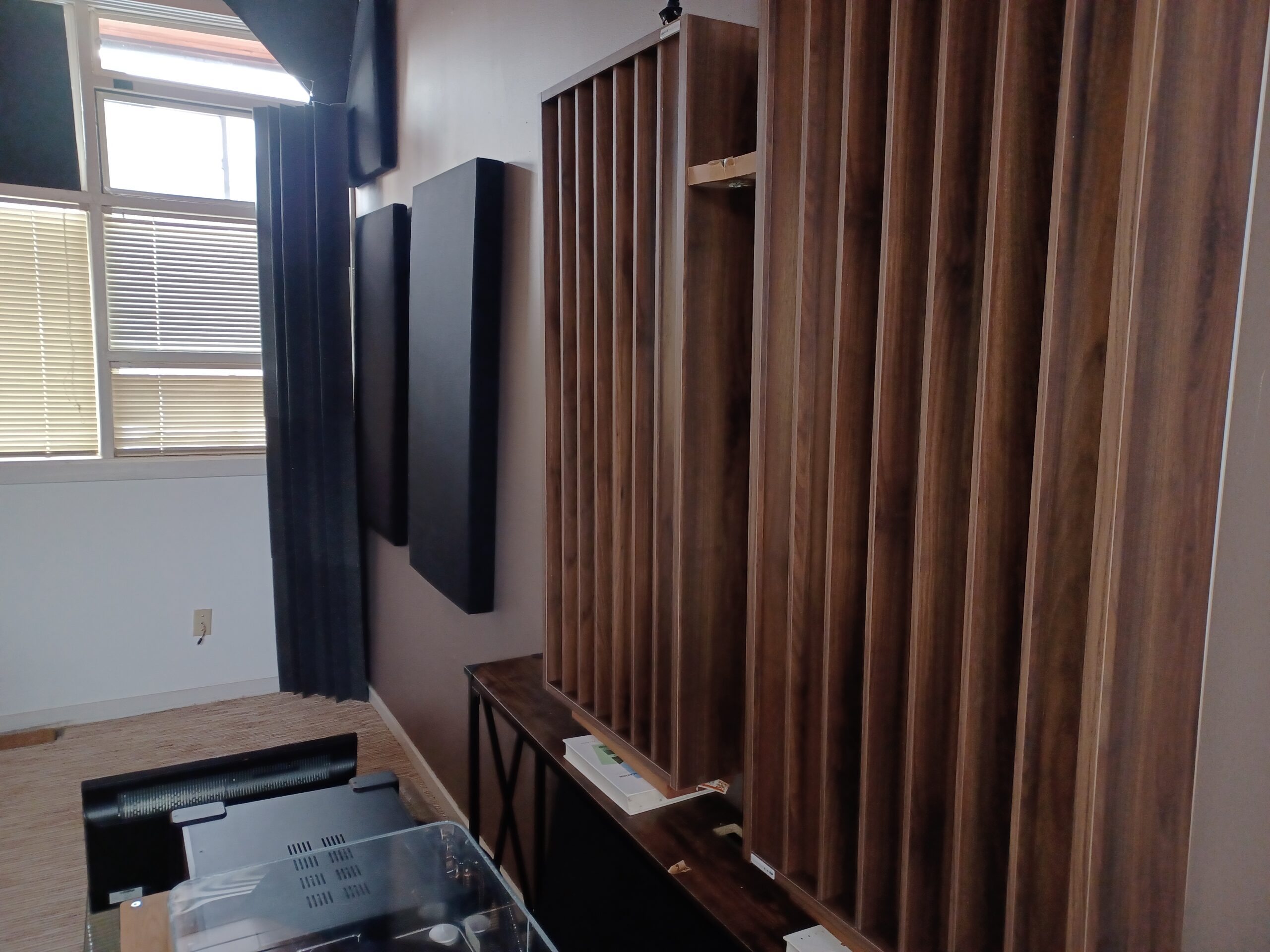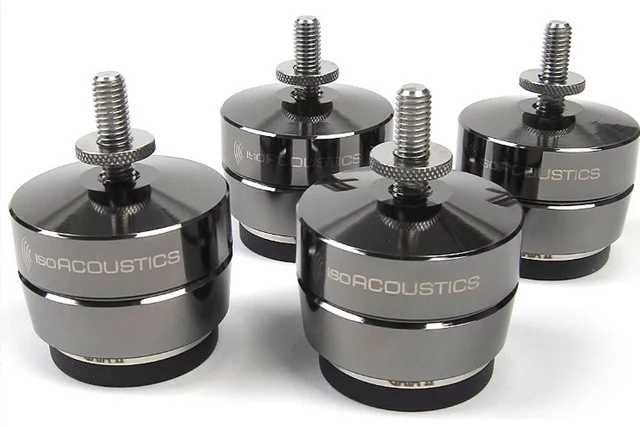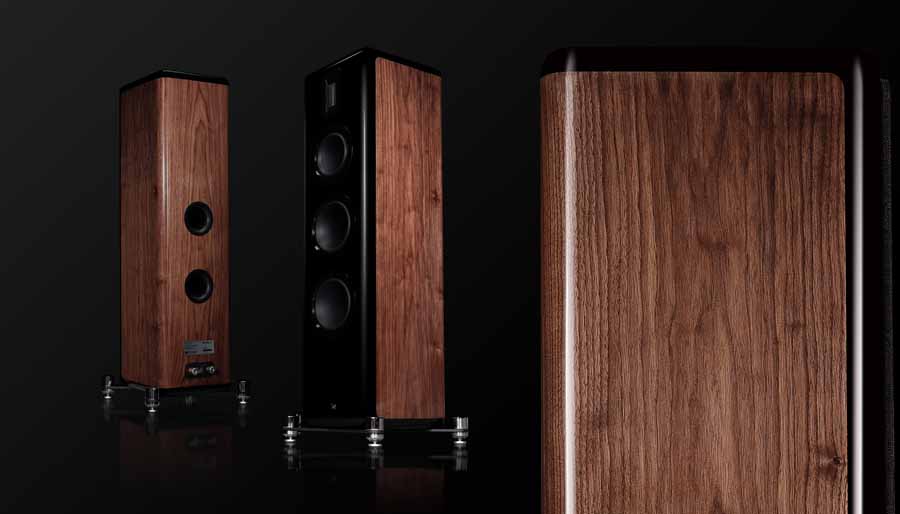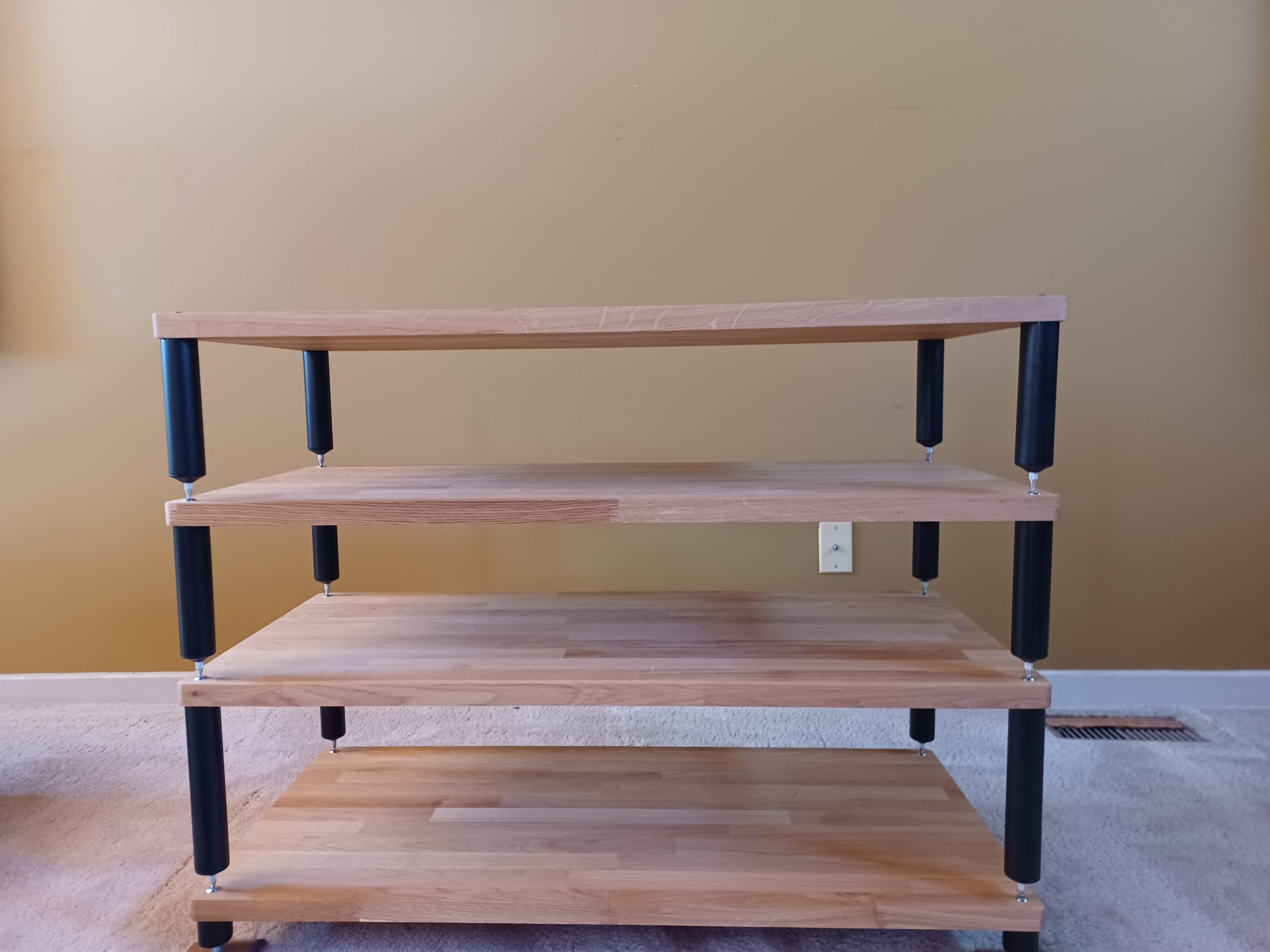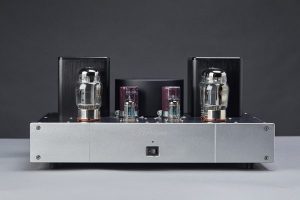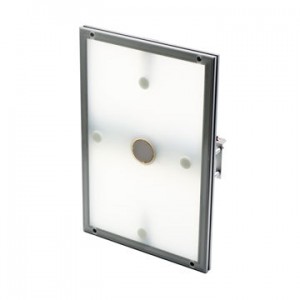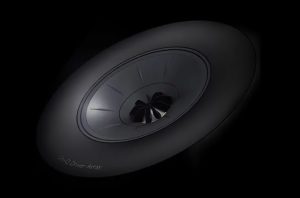If you follow the reports from the numerous audio shows happening these days, you can't help but miss glowing extracts about Spatial Audio's exhibits featuring the M3 and M4 Hologram models. These open baffle speakers are designed by Clayton Shaw, who leads the research and product development efforts at Spatial Audio in Park City, Utah. With 35 years of experience, and a background in Electrical Engineering and Acoustics, Clayton has developed and manufactured products for Evett & Shaw and Emerald Physics among many others.
This review focuses on the Spatial Audio Hologram M3 Turbo S, a decidedly different design, and an upgrade from the original M3. As expected from an open baffle scheme, they have no enclosure, no box surrounding the drivers. The point source design is also very efficient at 94dB with a 4 ohm nominal impedance. They use two 15 inch bass drivers and a controlled directivity compression driver mounted coaxially with the top bass driver, and a single set of binding posts. To my eye they have a striking, monolithic retro/mod look that pleases. Maybe the most unusual aspect is the price. A full range high end speaker with the performance that audiophiles crave at an affordable $2795?
According to Clayton, using a properly designed point source driver provides a coherent transition from midrange to treble and stable imaging by eliminating comb-filtering—the interference patterns found when the tweeter is physically separate as in most speaker designs. The compression driver tweeter's dispersion angle is limited to around 80 degrees and held constant across the spectrum, resulting in less interaction with the room and much more even response in reflected field energy. Interestingly, the crossover point is at 800Hz, providing coherent, high definition reproduction through the midrange and treble region.
I've heard open baffle speakers in the past that needed some help from digital signal processing to sound great. The M3 is the newest generation of DSP-free open baffle models, using a custom, limited dispersion compression driver to accomplish what the DSP was previously providing. From the Spatial website: "The best known way to address this problem is to employ controlled directivity principles, which are well known and highly developed in professional audio, such as in studio monitors and live sound applications. As applied to the home listening environment, this means that the dispersion angle is narrower and more consistent with frequency, with less energy hitting the side walls and floor/ceiling boundaries. We aim to produce an 80 degree pattern that drops off quickly beyond that point and has a frequency response shape close to the on-axis response. We can't eliminate energy bouncing off boundaries, but we can reduce the level, which increases the ratio of direct to reflected field energy. Then, the summed response at the listener position is similar to the quality one would expect in a near-field listening arrangement. This, in effect allows the listener to hear the speaker itself, instead of such a strong mix of the speaker and room."
The M3s arrived in two boxes that were about 70lbs. each. Opening the first box revealed a nice packing scheme. Molded hard foam on front, back, top and bottom, while the entire speaker was sealed and taped completely. Not only are they well protected, they'll be easy to pack up and reship if necessary. It took me about an hour from opening the first box to music. You could probably cut this in half, but I tend to go slow with a new component. One of the easiest speakers I've ever set up, all you need to do is install the floor brackets with a hex wrench—took about 5 minutes each—and you're good to go.
The speakers came in a white satin finish, which looked great. Their contemporary/retro look worked nicely in my mid-century modern home. Obviously minimalist, just a baffle that the drivers are attached to, with an open back. When you install the floor brackets from the bottom you can just barely see the seam that joins the two pieces of MDF to make the baffle. Dimensions are 42L x 17W x 3D inches. This variant is the Turbo S, which includes film and foil capacitors, and incorporates a new M25 compression driver with specially treated titanium diaphragm which increases stiffness to reduce distortion. This bumps the price up to $2795 vs the standard M3 at $2195.
Clayton told me he did manage to break these in a bit, but recommended more time at high volume. After set up I covered them with a couple of down quilts front and rear, turned up the gain, and let them cook for about 35 additional hours.
For most of the time I spent with the M3s I used my Quicksilver Mid Monos, 50-watts of EL-34 power. Preamplifier was a heavily modded Dared 7. Digital playback included my tricked out Mac Mini with YFS power supply, Mytek Stereo 192 DAC with DanaCable USB and two Audio Quest JitterBugs. I use Amarra for 16/44 Redbook playback and Audirvana for high res. Analog includes a VPI Scoutmaster sitting atop a Gingko Cloud 9 platform, with a Panasonic EPC-451C Strain Gauge Cartridge (Shibata) and the matching Panasonic SE-405 demodulator. Cables are all by DanaCable: Sapphire Reference speaker cable, Diamond Interconnects, and Power Force on the Quicksilvers. A couple of guest amplifiers also sat in. More about those later.
After trying both the 4 and 8 ohm taps on the Quicksilvers, the 4 ohm always sounded better, so I stayed with those for the entire time with the Quicksilvers.
When I finally sat down and started doing some serious listening, my first impression was that the open baffle design revealed a new wealth of musical information to the back and sides of the speakers. This is what I was expecting, and wasn't disappointed. The Spatial loudspeakers, true to form, unlocked the energy from the rear wave to add volume (not loudness) to the musical presentation and movement that I haven't heard a boxed speaker accomplish. As I started playing a variety of music from both analog and digital sources, the character of the M3s started to reveal itself to me. Basically a sound that is free of enclosure-related resonances, and comes across unfettered and life-like.
The first thing I wanted to get a handle on was the personality of the highs from 800Hz and up that the compression driver was producing. Before the M3s arrived, every audiophile that I talked to about these speakers essentially said the same thing. Something like: A compression driver, man it'll be shouty, it'll sound like a horn. What did I hear? Definitely not a shouty horn sound. The highs were pleasant, not etched, and non-fatiguing as long as you had the toe-in dialed, which was easy. The drivers matched very well, and I had a hard time identifying the crossover point. All in all, quite pleasant mids and highs when driven by 50 watts of EL34 power.
The bass was generous—as it should be with four 15-inch drivers. These speakers, like most, were sensitive to rear and side wall boundaries for bass response. I found they worked very well about three to five feet from the wall, but started to lose response if I pulled them further out into the room. The big woofers liked every amp I threw at them.
When I put on "Mira" from Melody Gardot's The Absence, vocals had that liquid, flowing texture that really draws you in. No trace of horn hardness from the compression driver. Lots of subtle micro dynamics, and the sheer amount of individual detail was impressive. When the chorus of female voices came in, they were pianissimo and totally present, but… ethereal and distant. Nice effect. I was drawn into this tune which was all about subtle dynamics, but never got above a mezzo forte. Interesting.
I love McCoy Tyner with Stanley Clarke and Al Foster's "Goin Way Blues". The instruments were rendered with perfect height, width, and placement. This cut was a joy to listen to, and throughout the entire album I'd forgotten how awesome Stanley Clark is on the upright bass. Yes, he was really the first player to give us amazing pyrotechnics on the electric bass, but damn, now I'm thinking his acoustic chops are even better. This timeless jazz trio really spoke to me, impeccable playing from three of the finest masters. McCoy's piano had that earthy, organic color that let you feel the rich texture. It drew me in and I listened to the entire recording with head bobbing.
Although the Tokyo String Quartet's Debussy & Ravel: String Quartets, "Andantino- Doucement Expressif" features the classic instrumentation, two violins, a viola, and a cello, it felt like there were more than 4 players. The lush string sound filled my room and the space between the notes was well-defined, and punctuated by the intake of breath before phrases. The ease of flow here was haunting and addictive.
I had a couple of vintage loaner amplifiers available that I thought might be fun, but also make a nice contrast to the Quicksilvers. Both have a few years on them, but were refurbished and modified by Dana Robbins of DanaCable. I've used both these amps before and they are winners.
The Southwestern Technological Products 215/A, also known as the Tigersaurus, is an odd looking, but great sounding little 25 watt solid state amp. The M3 was instantly revealing, voices not quite so lush-although not objectionable-bass immediately more solid. The entire flow just a tiny bit quicker. Images rock solid. The tiger took control with an authority that was impressive for all of 25 watts. A very nice combination with the M3s.
The second amplifier, the Stromberg Carlson (remember them?) ASP-422 (20 watts/channel) was a knockout. Vocals to die for, gorgeous full textures, lively pace and flow.
This was the amp I enjoyed the most, and was, if you like a luscious tube sound, the best match of the three amplifiers with the Spatial. Both of these low power amps drove the 94dB/4 ohm M3s easily, and I could live with either combination. The M3s instantly revealed the character of both amplifiers.
Overall I would describe the Spatial Audio Hologram M3 Turbo S as an easy to drive, easy to place, easy on the eyes speaker. It exhibits very low midrange coloration with excellent bass response, and because of its controlled dispersion will work easily with most rooms. The macrodynamics are among the best I've ever heard, and it's no slouch in the micro department either. The M3s can play loud, and I could not make them loose their composure.
The 20 year warranty and 60 day trail period certainly don't hurt. Couple all that with affordability and a clever, innovative design, and this is an easy speaker to recommend. Clayton tells me the M3s are in such demand they are routinely sold out, but he's in the process of mitigating that with some new manufacturing efficiency. Although the Spatial M3s will raise some eyebrows because they are outside of the typical categories of speaker designs, the scheme is clever and solid, and results in a high end speaker that not only pleases, but gives audiophiles that rare option of choosing a product that runs with the big boys, but is easy on the wallet. Some out there will not take these seriously because of the price. That would be a mistake. Affordable high end speakers made possible by design innovation and common sense. Why didn't somebody think of this sooner?
M3 Turbo
Retail: $2195 pair (USA Factory Price with WBT terminals)
M3 Turbo S
Retail: $2795 pair (USA Factory Price with the Spatial M25 compression driver, film and foil capacitors)
Spatial Audio
4220 W 2100 S Unit L
Salt Lake City, UT 84120
435.640.1294











